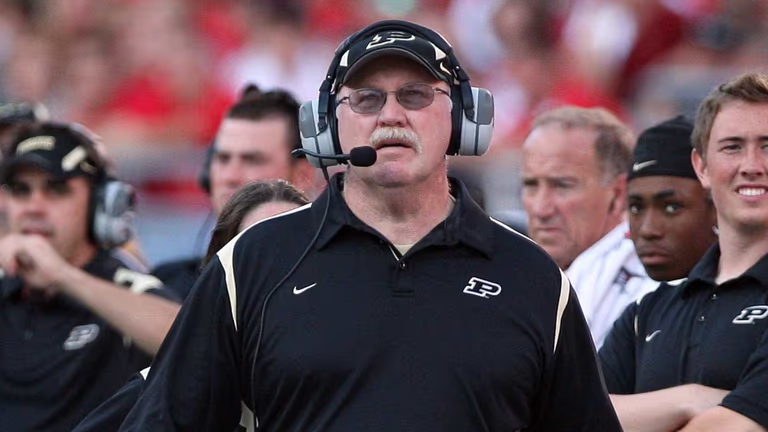When the National Football Foundation (NFF) decided to tweak its criteria for the College Football Hall of Fame, reducing the minimum winning percentage from .600 to .595, it opened up a conversation that's very close to the heart for many football fans. Imagine me, phone in hand, crunching Coach Joe Tiller's numbers: 126 wins out of 219 games.
As it turns out, his .575 winning percentage still leaves him short of a Hall of Fame ballot, whereas the late Mike Leach, with a .596 percentage, now becomes eligible. You can’t help but pause and think about the narrative these numbers don't tell.
Joe Tiller may not make the cut under these criteria, remaining Purdue's winningest coach but still out of the Hall of Fame. Yet, his mark on the Big Ten and college football is indelible.
He wasn't just another head coach; he was a revolutionary mind who brought a new kind of energy to the game. At Purdue, he turned a struggling program into a consistent contender, which, if you ask me, is the kind of transformation that transcends numbers.
So what about Tiller's body of work at Purdue, you ask? After a promising stint at Wyoming that peaked with a 10-2 season, he took the helm of a Purdue team that had been battling obscurity.
Within his first season, Tiller led Purdue to a remarkable 9-3 record, capping it off with a win against Oklahoma State in the Alamo Bowl. The Boilermakers, who hadn't seen such heights in over a decade, began an impressive streak of eight bowl games in eight seasons under his guidance.
In 2000, a Big Ten title win and a Heisman finalist in quarterback Drew Brees at the helm propelled Purdue to its first Rose Bowl since 1967. Tiller's tenure was anything but ordinary, with him posting an 87-62 overall record and notching up significant wins in Big Ten matchups.
Purdue celebrated Tiller by inducting him into the Indiana Football Hall of Fame in 2012 and the Purdue Athletics Hall of Fame a year later. However, the national recognition that comes with a spot in Atlanta remains elusive. Yet, if you're tuning into college football on a fall Saturday, you'd still see his fingerprints all over the modern game.
Tiller's impact stretches beyond his impressive record at Purdue. He fundamentally altered Big Ten football with his strategy, affectionately dubbed "basketball on grass" by former Northwestern coach Pat Fitzgerald.
This strategy re-energized Purdue football, causing headaches for defenses across the conference. Under Tiller, Purdue became a breeding ground for standout receivers and quarterbacks, leaving an indelible mark on the league's record books.
The Big Ten wasn't always open to change, but Tiller forced it to evolve. In a conference once synonymous with "three yards and a cloud of dust," his innovative aerial attack style was a breath of fresh air.
It’s hard not to argue that such a transformative impact deserved to bypass the strict criteria that prevent his Hall of Fame induction. Excellence can be measured in many ways, and someone who fundamentally changed the way the game is played certainly fits the bill.
Standards and criteria are necessary for Hall of Fame enshrinements, we all get that. But the focus should be on the totality of a coach's impact, not just their numbers.
Tiller's turnaround of Purdue from a struggling program to a consistent bowl contender has to count for something, doesn’t it? It's a stark contrast to what someone like Ryan Day inherited at Ohio State—a program already brimming with a tradition of success, resources, and talent.
Day has done a stellar job, no doubt, but it shows that context matters.
In conclusion, as fans, let's advocate for a broader view of what makes a Hall of Famer. Instead of setting the calculators to determine eligibility, let's look at their legacy. Because for coaches like Joe Tiller, their true worth does not fit neatly into a formula.


